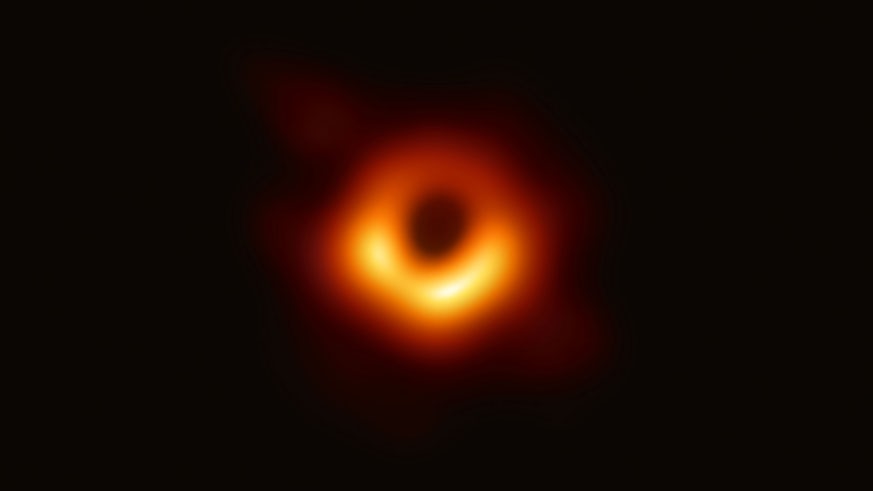Seeing the unseeable
10 April 2019

Scientists have achieved what once seemed impossible, providing the first ever image of a black hole.
The landmark discovery announced today by an international team, including academics from Cardiff University, reveals how a collection of telescopes from around the globe – together known as the Event Horizon Telescope (EHT) – have made it possible to “see the unseeable.”
The image reveals a black hole at the centre of Messier 87, a massive galaxy in the nearby Virgo galaxy cluster. This black hole resides 55 million light-years from Earth and has a mass 6.5-billion times that of the Sun.
The shadow of a black hole, silhouetted against a bright disc of hot gas, is the closest we can come to an image of the black hole itself- a completely dark object from which light cannot escape.
Black holes are extremely compressed cosmic objects, containing incredible amounts of mass within a tiny region. The presence of these objects affects their environment in extreme ways, warping spacetime and super-heating any surrounding material.
By measuring the shadow of a black hole, the team could calculate a great deal of information about the nature of this fascinating object and also measure its enormous mass.
The image is the culmination of decades of observational, technical, and theoretical work and will offer scientists a new way to study the most extreme objects in the Universe predicted by Einstein’s general relativity.
EHT project director Sheperd S. Doeleman of the Center for Astrophysics, Harvard & Smithsonian said: "We are giving humanity its first view of a black hole — a one-way door out of our Universe.
“We have achieved something presumed to be impossible just a generation ago. Breakthroughs in technology and the completion of new radio telescopes over the past decade enabled our team to assemble this new instrument — designed to see the unseeable."
A total of 13 partner institutions have worked together to create the EHT, operating a network of telescopes in a number of extreme regions on Earth, including volcanoes in Hawaii and Mexico, mountains in Arizona and the Spanish Sierra Nevada, the Chilean Atacama Desert, and Antarctica.
Staff from Cardiff University’s School of Physics and Astronomy were recently introduced to the EHT project through their involvement in the James Clerk Maxwell Telescope in Hawaii.
Dr Tim Davis said: “It’s been a privilege to be one of the first humans to see a black hole directly. The extreme gravity from the black hole warps space and time around it, allowing us to see both the front and the back of the superheated disc of gas spinning around it exactly as Einstein’s theory predicted. We are now looking forward to pushing this technique further, studying both the supermassive black hole in our own galactic centre, and other nearby galaxies with EHT.”
The EHT observations use a technique called very-long-baseline interferometry (VLBI) which synchronises telescope facilities around the world and exploits the rotation of our planet to form one huge, Earth-size telescope. This technique allows the EHT to achieve an extremely high resolution — enough to read a newspaper in New York from a sidewalk café in Paris.
Share this story
It is a friendly, approachable School with a strong commitment to teaching excellence and world class research in physics and astronomy.


